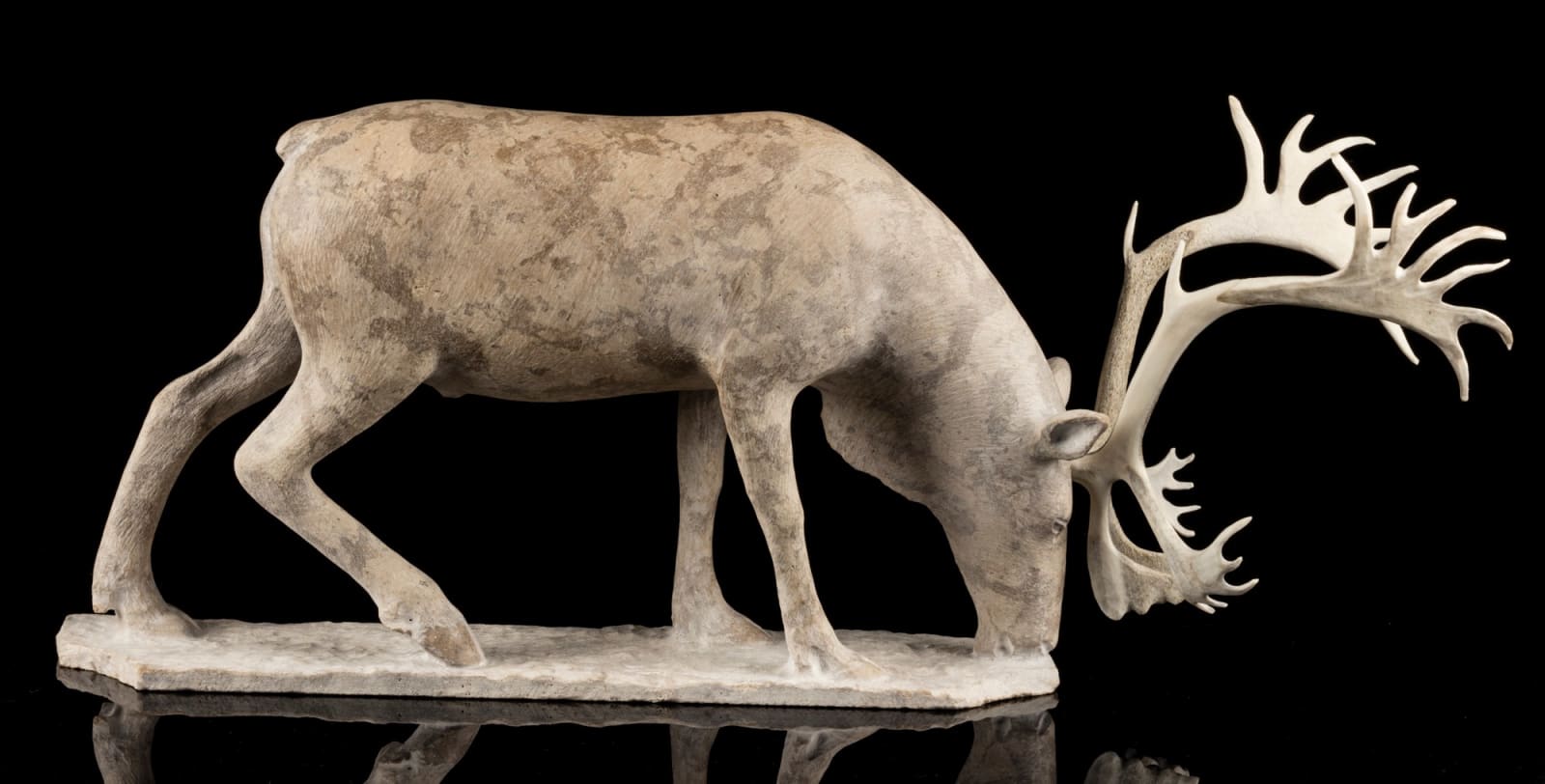-
Artworks
PAUL QUVIQ MALLIKI (1956-) IGLOOLIK
Caribou Grazing, 2002stone and antler, 8 x 20.5 x 5 in (20.3 x 52.1 x 12.7 cm), measurements reflect dimensions with inset antlers.
signed and dated, "PAUL MALLIKI / ᑦᑯᕕᖅ / 02".Lot 137
ESTIMATE: $15,000 — $25,000
PRICE REALIZED: $14,400.00Further images
Paul Malliki is one of the foremost living Inuit wildlife artists. Born at an outpost camp, his family settled in Igloolik when he was ten years old and then in...Paul Malliki is one of the foremost living Inuit wildlife artists. Born at an outpost camp, his family settled in Igloolik when he was ten years old and then in Naujaat (Repulse Bay) when he was twenty. Malliki started carving as a young boy and was already selling his works by his early teens. His works have been widely exhibited and he has received several important commissions including the opportunity to collaborate on the creation of the Nunavut mace in 1999. Malliki has also served on the Board of the Inuit Art Foundation, has taught carving courses at Arctic College, and in the Fall of 2016 was invited to an artist-in-residence program sponsored by the Winnipeg Art Gallery.
Raised on the land, Malliki has hunted all his life and has intimately observed his prey, particularly caribou and polar bears. Malliki prides himself on his ability to not only faithfully depict the physical appearance of his animals but to also capture their movements and attitudes. Malliki ranks alongside great Inuit wildlife artists such as Henry Evaluardjuk, Davie Atchealak, Nuna Parr, and Lucassie Ikkidluak.
Many of Paul Malliki's caribou are sculpted with dark stone and a smooth surface, while his bears are often carved with textured fur and solid white stone. This example is somewhat different. It was carved using Tyndall stone – a Manitoba stone that has been used for many important public buildings including parts of the Parliament Buildings in Ottawa and the Canadian Museum of History in Gatineau. Tyndall is a cream-coloured dolomitic limestone with fossilized deposits that create a mottled effect. Malliki has cleverly used the patterning to mimic the camouflaging of the Arctic caribou coat. He also adds a soft texture by delineating fine fur throughout the surface without polishing. This visually stunning sculpture also sports perhaps the most spectacular rack of antlers we have seen. Fashioned with an equal amount of finesse, Malliki has used ingenious and almost seamless joinery to create antlers that are incredibly lifelike. Simply astonishing.
References: For a Caribou Family by the artist see Walker’s Auctions, 18 Nov. 2015, Lot 238. For an impressive Scenting Polar Bear by Malliki see First Arts, 30 Nov. 2021, Lot 121.
Provenance
An Ottawa Collection.
Join our mailing list
* denotes required fields
We will process the personal data you have supplied in accordance with our privacy policy (available on request). You can unsubscribe or change your preferences at any time by clicking the link in our emails.










